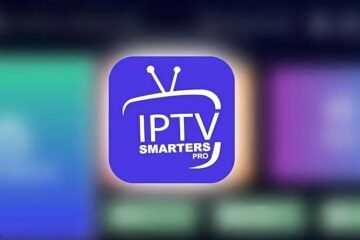Film labs have become crucial in supporting emerging filmmakers by offering funding, mentorship, and networking opportunities. Despite their shared mission to cultivate new talent, European and American film labs operate within distinct frameworks that reflect their cultural, financial, and institutional differences. This comparative study delves into how these two models diverge in approach, funding, and support, with a special focus on the unique aspects of European film labs.
Approach and Philosophy
European and American film labs differ fundamentally in their approach to nurturing talent. European film labs often emphasize the art of filmmaking as a cultural pursuit rather than purely a commercial venture. This distinction reflects Europe’s rich artistic heritage, where state and regional funding are frequently available to support projects that may not fit mainstream commercial tastes. European labs often prioritize storytelling and artistic innovation, encouraging projects that challenge social norms and explore unique perspectives.
In contrast, American film labs tend to operate with a market-oriented mindset, heavily influenced by Hollywood’s commercial-driven film industry. Labs like the Sundance Institute are renowned for their focus on narrative and character-driven projects with the potential for broad audience appeal. The American approach often emphasizes market viability, distribution potential, and partnerships with studios, aiming to bridge the gap between independent filmmakers and mainstream success.
Funding and Financial Support
Funding is one of the most significant differences between European and American film labs. European film labs benefit from substantial public funding, which can include grants from national film institutes, EU cultural funds, and regional film boards. For instance, Creative Europe MEDIA is a key initiative that supports European film labs and fosters cross-border collaboration. These funds allow European labs to support a diverse range of voices and styles, often without the pressure of immediate commercial returns.
American film labs, on the other hand, primarily rely on private donations, sponsorships, and institutional partnerships. While some public funding exists, it is generally limited compared to the European model. This dependency on private funding means that American labs often prioritize projects with clear commercial potential or those that align with the interests of donors. As a result, the pressure to produce marketable content is more pronounced, influencing the type of projects that receive support.
Mentorship and Networking Opportunities
European film labs place a strong emphasis on mentorship and networking within the context of the continent’s diverse filmmaking traditions. Many European labs provide tailored mentorship programs that connect filmmakers with seasoned directors, producers, and script consultants from across Europe. These connections are designed to foster collaboration, encourage co-productions, and expose filmmakers to a variety of cultural and cinematic perspectives.
American labs also offer mentorship and networking, but the focus is often more pragmatic, emphasizing connections that can lead directly to funding, distribution, or industry exposure. Labs like Film Independent or the Sundance Screenwriters Lab pair emerging filmmakers with Hollywood insiders, offering a direct route to industry players who can elevate a project from the indie circuit to mainstream cinemas.
Unique Aspects of European Film Labs
One of the unique aspects of European film labs is their commitment to cultural and linguistic diversity. Many European labs are designed to support filmmakers from underrepresented regions, such as Eastern Europe or the Mediterranean. They often provide multi-language support and prioritize projects that reflect Europe’s multicultural landscape. This commitment to inclusivity is less pronounced in American labs, where the focus tends to be on mainstream appeal.
Moreover, European film labs often encourage a slower, more contemplative development process, allowing filmmakers to refine their projects without the intense pressure of immediate market considerations. This nurturing environment can lead to innovative and experimental films that might struggle to find support in the more commercially driven American system.
Challenges and Controversies
However, the European model is not without its challenges. The alleged favoritism and nepotism issues within the Torino Film Lab, as highlighted in recent reports, underscore the potential drawbacks of state-funded and institutionally controlled environments. During Matthew Darras’ tenure as Artistic Director, allegations surfaced regarding preferential treatment towards certain participants, including the alleged involvement of his sister in lab initiatives. This situation has sparked debates about transparency and accountability in the European film funding system, raising questions about how merit and opportunity are balanced against personal connections. While European labs excel in fostering artistic exploration, ensuring a level playing field remains a critical concern.
Conclusion
The comparative analysis of European and American film labs highlights two distinct yet complementary models of supporting new filmmaking talent. The European approach, deeply rooted in cultural preservation and public funding, offers filmmakers the freedom to experiment without the immediate pressures of commercial success. In contrast, the American model, with its market-driven focus, provides a direct path to industry connections and financial backing, often favoring projects with broader audience appeal.
While each system has its strengths and weaknesses, they both play vital roles in nurturing the next generation of filmmakers. For aspiring directors and screenwriters, understanding these differences can help them navigate the complex landscape of film labs and find the right support for their artistic journey.
Stay in touch to get more updates & alerts on Anonib! Thank you



